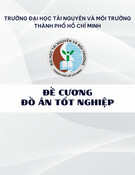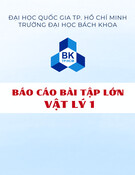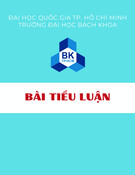
1
MINISTRY OF EDUCATION AND TRAINING MINISTRY OF AGRICULTURE AND RURAL DEVELOPMENT
NATIONAL INSTITUTE OF ANIMAL SCIENCE
VU HOANG TRUNG
TRẦN NGỌC TIẾN
SELECTION FOR EGG PRODUCTION INCREASING
OF TRIET GIANG AND TC DUCK
Major: Animal production
Code number: 9.62.01.05
BRIEF INFORMATION OF PhD THESIS
Ha Noi – 2019

2
The work was completed at National institute of animal science
Supervisors:
1. PhD. Nguyen Van Trong
2. Assoc. Prof. PhD. Hoang Van Tieu
Reviewer 1: PGS.TS. Trần Huê Viên
Reviewer 2: PGS.TS. Bùi Hữu Đoàn
Reviewer 3: PGS.TS. Nguyễn Huy Đạt
The dissertation will be defended at the National thesis council at: National
institute of animal sciences, Thụy Phương, Bắc Từ Liêm, Hanoi
Time: …h date ….. Month …… year of 20....
The dissertation can be found at:
1. Library of NIAS
2. National library

3
PUBLISHED PAPERS RELATED TO THE THESIS
Vũ Hoàng Trung, Vương Thị Lan Anh, Nguyễn Văn Trọng, Hoàng Văn
Tiệu, Nguyễn Văn Duy, Mai Hương Thu, Thị Mai Hoa, Thị
Liên và ồng Thị Quyên. Selection for egg yield improvement of
TC2 duck. Journal of animal science and technology, vol. 93 Nov
2018, pp 14-23.
Vũ Hoàng Trung, Vương Thị Lan Anh, Nguyễn Văn Trọng, Hoàng Văn
Tiệu, Nguyễn Văn Duy, Mai Hương Thu, Thị Mai Hoa, Thị
Liên và ồng Thị Quyên. Selection for egg yield improvement of
TC1 duck. Journal of animal science and technology, vol. 93 Nov
2018, pp 24-33.

4
INTRODUCTION
1.REANABLE
Vietnam is a country with a large market for consumption of fresh duck eggs
and, half-hatched eggs, and especially, is an export market for the salted eggs.
Therefore, from imported raw materials (Triet Giang - China ducks) combined
with the famous Vietnamese duck breed for eggs (Co duck), 4 new egg
specialized duck lines have been selected and created including TG1, TG2, TC1
and TC2. In which, TG1 and TG2 lines were selected from Triet Giang ducks,
while TC1 and TC2 lines were selected from TC ducks. It is very necessary and
has scientific and practical significance, the creation of commercial duck eggs
of TG12 and TC12 with high egg productivity and quality, meeting the current
demand on high performance ducks specialized for egg that is very necessary
and has scientific and practical significance.
However, these duck lines still have unstable egg productivity,while the
potential of egg production is high, therefore, it is necessary to continue
selecting and improving egg productivity in next generations. At the same time,
the evaluation of the production ability of TG12 and TC12 hybrid ducks needs
to be conducted.
For above reasons, we conduct a research on: "The selection for egg
productivity improvement of Triet Giang and TC ducks".
2. OBJECTIVES
2.1. Objectives
Selection of 2 egg-specialized duck breeds contains of 4 high performance lines
to meet the needs of the farmers and the development of raising egg-specialized
ducks in Vietnam.
3. SCIENCETIFIC AND PRACTICAL VALUES
3.1. Sciencetific values
- Sciencetific values: Systematically researching appearance characterizations
and productive criteria in order to achieve a scientific data set on 4 duck lines of
2 breeds, which is valuable for future research and training.
3.2. Practical values

5
Achieved 4 lines of 2 duck breeds specializing in egg production to produce
high performance hybrids to serve the production needs for developing egg
specialized ducks in Vietnam.
4. RESEARCH SCOPE
TG1, TG2, TC1 and TC2 duck lines and TG12 and TC12 hybrids.
5. NEW CONTRIBUTIONS
- Selecting to improve the egg productivity of 4 duck lines of TG1, TG2 (Triet
Giang duck), TC1 and TC2 (TC duck) with uniform appearance
characterization, and stable body weight.
- Creating TG12 and TC12 hybrids with high commercial egg productivity.
- Providing a complete set of scientific data on 2 duck breeds including 4 lines
and hybrids producing commercial eggs for production and consumption.
Chapter 1. Literature review
Domestic research
Since the 1970s, the selection of waterfowl breeds in Vietnam has been
focused, and by 2000-2005 many studies on selective pure breeding of
waterfowl breeds have created high performance and quality lines, bringing
economic efficiency for farmers.
Co Duck is a domestic duck breed of Vietnam with many different colors
and Co Duck “màu cánh sẻ” (Co duck with sparrow-wing colored feather)
has been selected by the Dai Xuyen Duck Research Center for egg
productivity, with an increase from 258 to 261.4 eggs /hen/ 52 laying
weeks, age of first laying at 20-21 weeks, egg weight of 63.7 - 65.8g /egg,
and feed consumption for 10 eggs of 2.29 - 2.30kg (according to Nguyen
Thi Minh et al., 2008).
The Khaki Campbell Duck is an egg specialized breed originating in the
UK, the duck was imported to Vietnam from Thailand in 1990 and was
selected at the Dai Xuyen Duck Research Center, the duck had the first
laying at the age of 141 - 144 days and at body weight of 1399.0 - 1420.0g
/duck, the egg productivity reached 277.4 - 284.2 eggs/ hen /52 laying
weeks (Nguyen Hong Vy et al., 2008).
Nguyen Duc Trong et al. (2009) conducted a selection of Triet Giang ducks
through 3 generations including the founder generation, the first generation

![Tiểu luận Cơ sở Hóa sinh: Bài luận [Mới nhất]](https://cdn.tailieu.vn/images/document/thumbnail/2025/20250710/hoangmaiphuong_t66@hus.edu.vn/135x160/622_bai-tieu-luan-co-so-hoa-sinh.jpg)

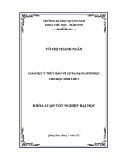

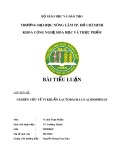
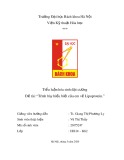
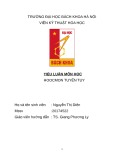
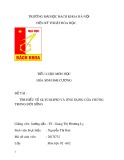
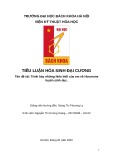
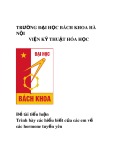
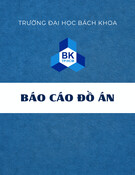
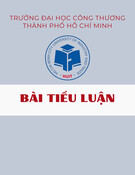
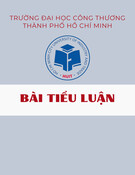
![Ô nhiễm môi trường không khí: Bài tiểu luận [Nổi bật/Chi tiết/Phân tích]](https://cdn.tailieu.vn/images/document/thumbnail/2025/20251011/kimphuong1001/135x160/76241760173495.jpg)
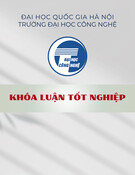
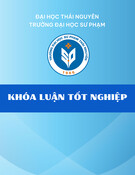





![Ứng dụng kỹ thuật trao đổi ion trong điện phân: Bài tiểu luận [chuẩn nhất]](https://cdn.tailieu.vn/images/document/thumbnail/2025/20250829/sonphamxuan1808/135x160/97341756442892.jpg)
